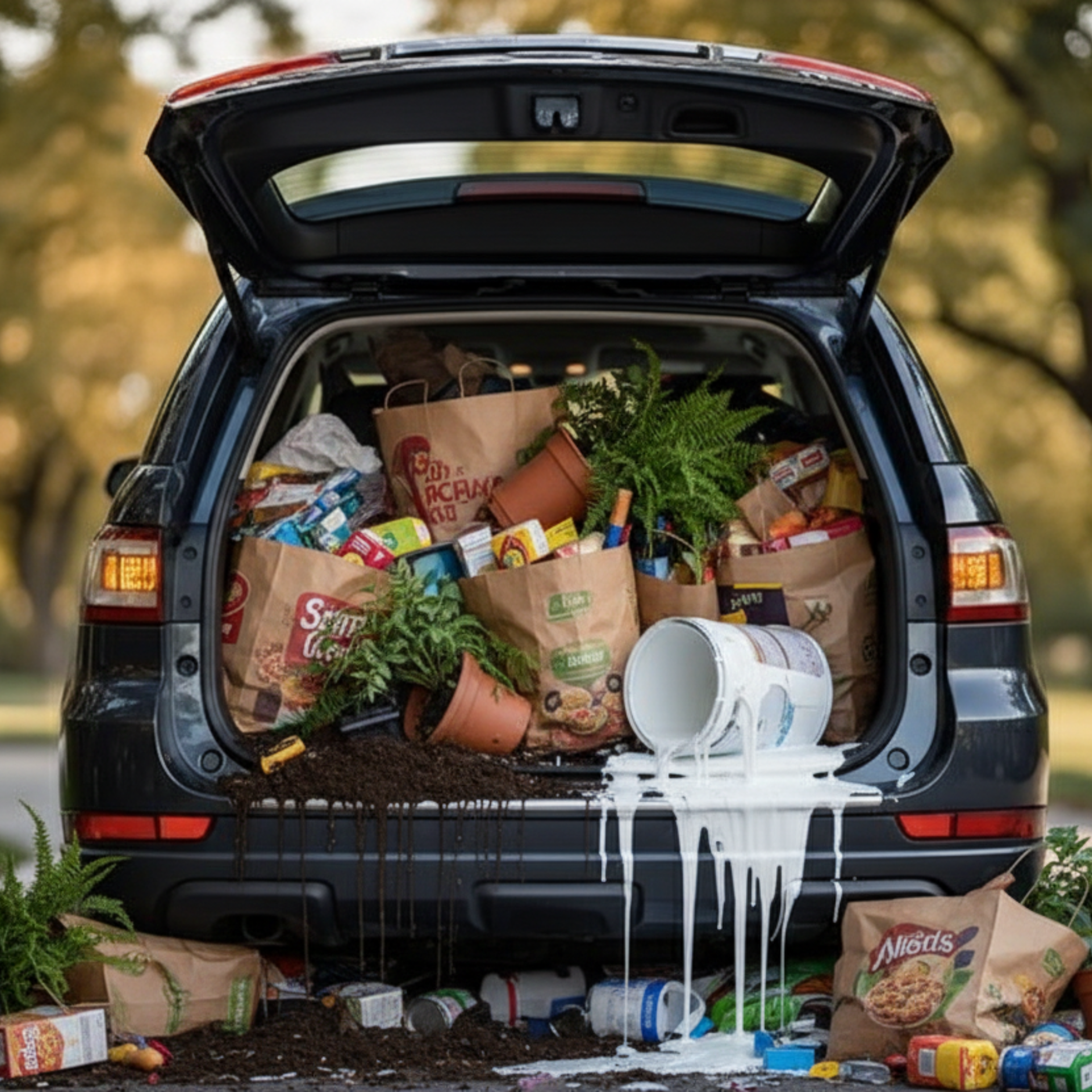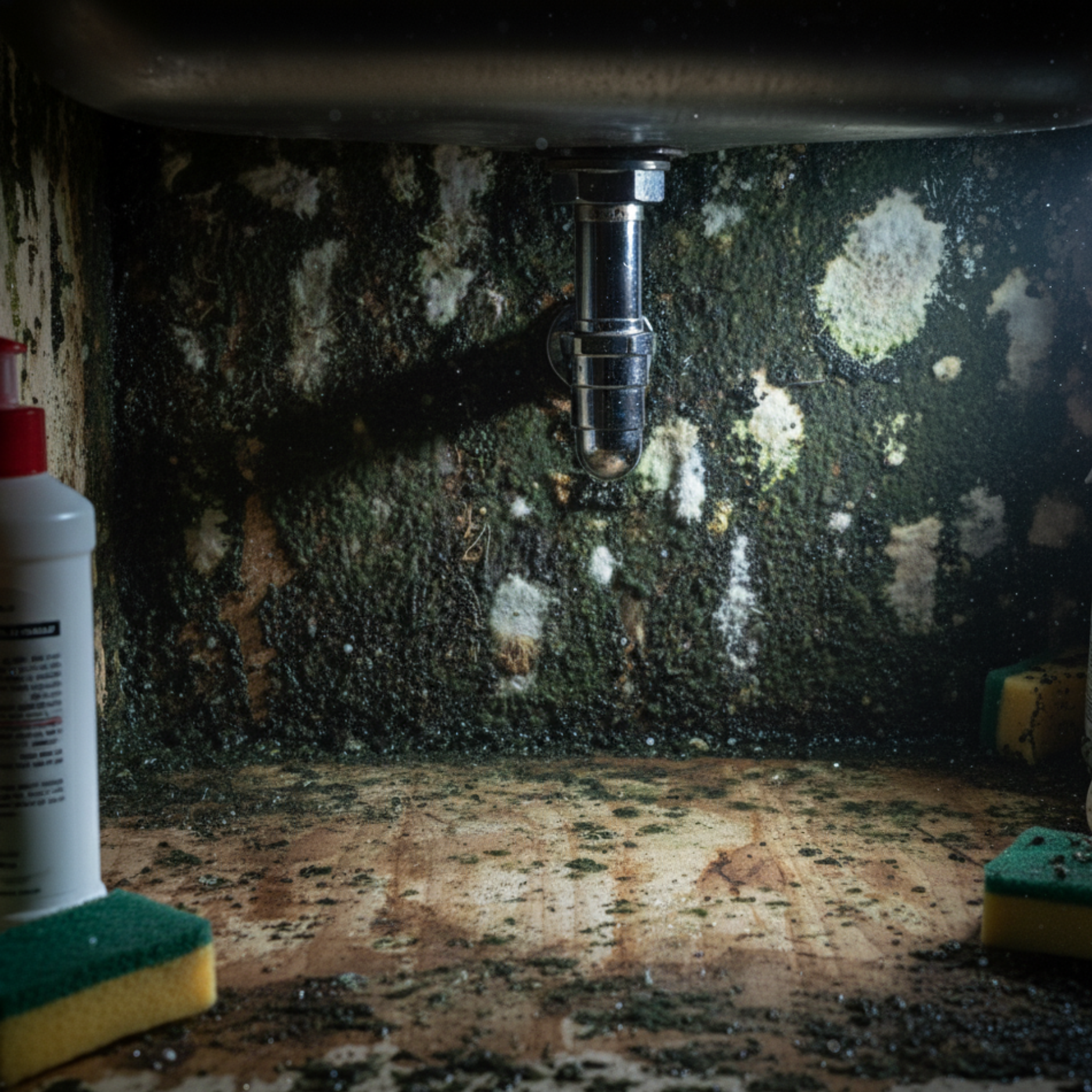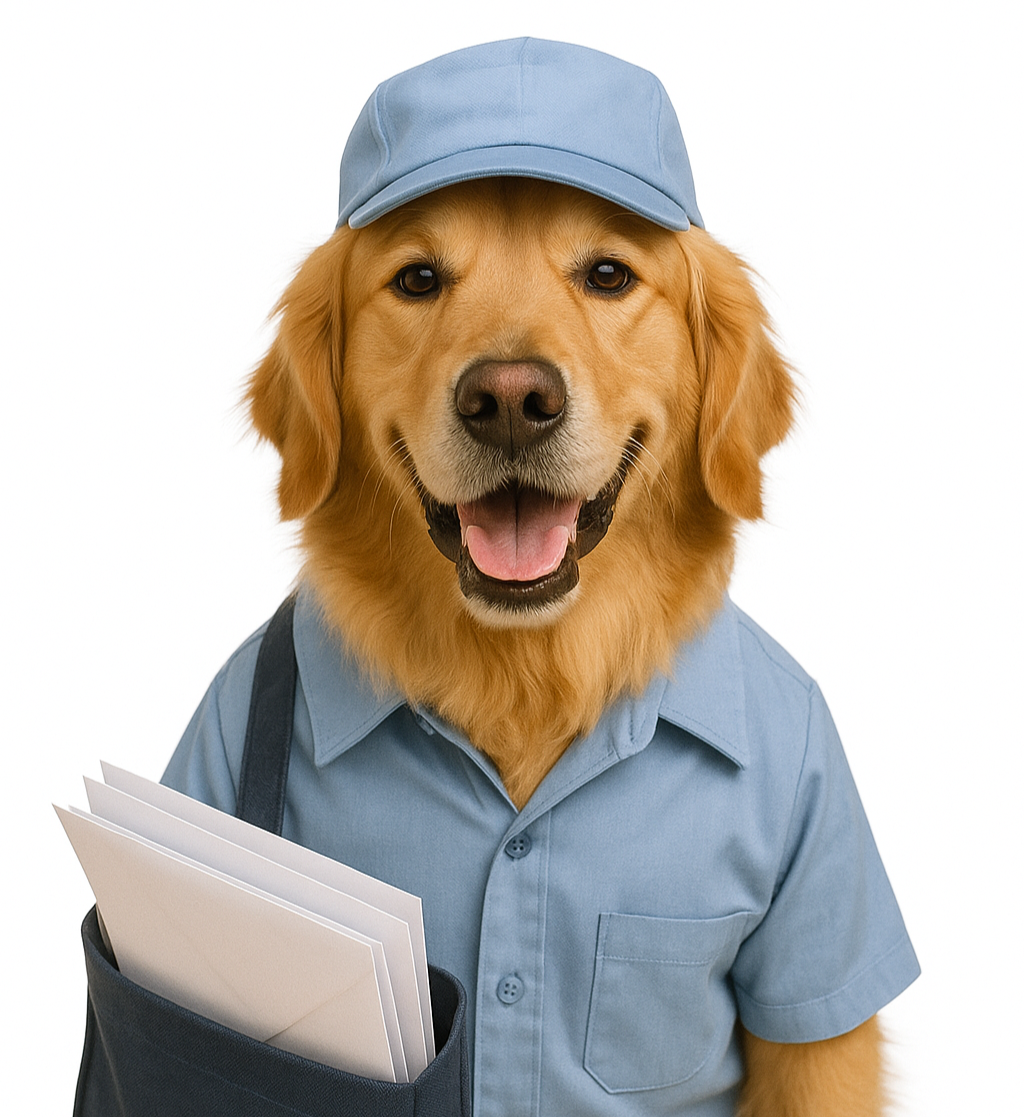There’s a unique thrill to an interior paint job. You’ve agonized over paint swatches, chosen the perfect hue, and you’re buzzing with the excitement of transforming your space. And then, the dread hits.
It’s the vision of the mess.
Let's be honest: the prep and cleanup are the worst part of any DIY painting project. We’ve all been there. You spend an hour taping and laying down flimsy plastic drop cloths, only for them to slip, bunch, and create a tripping hazard. Or you use an old canvas drop cloth, thinking you’re a pro, and watch in horror as a paint spill soaks in, creating a soggy, slow-to-dry trap that can damage the floor underneath.
Your work area becomes a cluttered disaster zone. The paint tray is on one side of the room, your stir stick is... somewhere... and you just set your drippy brush down on a piece of "clean" (but now paint-covered) newspaper. Drips, splatter, and paint-covered tools ruin carpets, wood, or tile. Cleanup is a nightmare of sticky, disposable tarps and a sinking feeling in your stomach.
What if you could paint like a pro, with zero mess and zero stress?
The secret isn't a better drop cloth; it's a smarter system. It’s called the "Contained Painting Station," and it’s a revolutionary way to manage your entire project. It turns a chaotic room into an organized, efficient, and mess-managed workspace. And at the heart of this system is your new secret weapon: the Magic Carpet®.
This guide will walk you through how to build the perfect, "contained" workstation for your next interior paint job, from catching drips to mixing paint, using the mat as the central hub.
Part 1: The Great Drop Cloth Deception (And Why Yours Is Failing You)
For decades, we’ve been told to "protect our floors" with two flawed options: plastic sheeting or canvas tarps.
- Flimsy Plastic Sheeting: This is the cheapest option. It offers zero absorbency. Any drip or spill instantly turns into a slick puddle, waiting for you to step in it and track paint "boot prints" all over the house. It’s a slip-and-slide hazard that bunches up, constantly needing to be repositioned.
- "Pro" Canvas Tarps: Canvas feels more professional, but it’s not much better. It’s heavy, hard to position, and while it absorbs a spill, it does so slowly, allowing the paint to puddle on top before soaking in. This creates a soggy mess that stays wet for hours, potentially trapping moisture against your floor and still allowing for tracking.
The core problem is that these "solutions" aren’t workstations; they’re just loose covers. They don't manage the mess effectively, and they certainly don't help you stay organized.
Part 2: The Foundation: Ditch the Tarp, Master the Mat
The first step to building your contained station is to lay a foundation that actually works. This isn't just about covering the floor; it's about controlling the environment with a tool that lays flat and helps you manage the inevitable drips.
This is where we bring in the pro-level secret: the Magic Carpet® Multi-Use Mat.
Yes, our mats are famous for their versatility. This exact mat is so durable, it's also sold as one of our premier Crate & Kennel Pads. It's engineered to be tough enough for the messes that come with bringing home a new puppy, which makes it more than a match for a simple can of paint. This multi-use approach is central to our brand; you can see the full range of possibilities in our complete catalog.
Why is this the ultimate drop cloth replacement?
- It Wicks and Disperses—Fast: The Magic Carpet® features a patented 'pass-through' absorbent design. When paint drips or splatters, it doesn't just puddle on the surface like plastic. It’s wicked away from the surface and dispersed into the mat's core—pulling liquid off the top layer to minimize tracking.
- It Lays Flat: Unlike flimsy plastic that bunches and drifts, the mat has enough substance to lay flat, giving you a more stable and reliable work surface.
- It Dries Quickly: Dispersed moisture dries remarkably fast—unlike canvas that holds a spill in one place and stays soggy for hours. The Magic Carpet® manages moisture; it doesn’t just block it. Learn more about the Magic Carpet.
- It’s Reusable and Washable: Let latex paint dry, shake it off, hose it down, and hang it to dry. Ready for your next project.
Available in large sizes (like the 26.75" × 44.75"), one or two can protect your room's main walkways and the entire area under your painting zone. You can even grab a 2-Pack of our mats to create a long, protected path from the door to your workstation.
Part 3: Building Your "Contained" Command Center
With your absorbent, lay-flat foundation in place, it’s time to build your "Command Center." This is a dedicated, portable station where all your tools and materials live. This is what stops the clutter and contains the mess. It's the first step to truly master your domain and control your project.
The perfect tool for this is the Magic Carpet® DIY Work Mat and Kneeling Pad (2-Pack), straight from our Work Mats & Surface Protection collection.
Step 1: Establish Your "Command Center" Mat
Take one of the 11.75" × 18" mats from your 2-Pack. This is now your central hub. Place it in the middle of your larger Magic Carpet® floor protector.
This mat has one simple rule: all open paint and primary tools live here. The paint can, paint tray, and stir sticks do not leave this mat. The puncture-resistant textile shrugs off tools, and the absorbent core provides splash insurance for pouring.
Step 2: The "Drip Zone" Mat
Take your second mat, or another Magic Carpet® Multi-Use Mat, and place it next to your Command Center mat.
This is your dedicated "Drip Zone." When you pause or adjust the ladder, the active, wet brush lives here—never on the floor, never on the can. This single habit eliminates most accidental paint messes.
Step 3: Master the Prep with the Kneeling Pad
The Kneeling Pad in the 2-Pack is your best friend for the most painful part of prep: taping the baseboards. Low-profile, cushioned, and stable, it eases pressure on your knees and back—and because it’s absorbent, you’re not kneeling in rinse water when cleaning edges before taping.
Part 4: Best Practices for a Drip-Managed Project
- Contained Mixing and Pouring: Always open your paint can on the Command Center mat. Stir and pour directly over it—drips are wicked from the surface into the core, not left as sticky rings on the floor.
- The "No-Wander" Rule: Tools never wander. Stir stick, can opener, 5-in-1 → Command Center. Wet brush → Drip Zone. This avoids the “Where did I put that…?” scramble and keeps paint off furniture. See more in 101 Ways to Use the Magic Carpet®.
- Loading Your Roller: Keep the tray on the Command Center. Excess splatter is caught instantly; the large foundation mat catches any “flicks” as you start rolling.
This system works. It’s organized, clean, and incredibly efficient—freeing you to focus on laying down a beautiful, even coat.
Part 5: The After-Job Victory: Cleanup in Minutes
- Consolidate: Messy tools are already contained on your two small mats; the main protector handled the splatters.
- Cap and Clean: Cap your paint can (on the mat), then clean brushes and rollers.
- Dry and Store: For latex paint, let mats dry—the wicking that pulled paint in helps it dry fast. For a deeper clean, hose off, hang to dry, and roll up. Durable, washable, ready for the next project. No waste, no sticky mess, no costly cleanup.
A Smarter Way to Paint
A home DIY project should be a source of pride, not stress. By ditching the failed “solutions” of the past and adopting a contained painting station, you change the entire experience.
The Magic Carpet® isn't just a mat; it’s a better, smarter, cleaner way to work. It helps protect your home, organizes your tools, and saves your knees. It’s the sustainable, American-made solution that empowers you to get that professional-level result—minus the mess.
- Shop the Magic Carpet® DIY Work Mat and Kneeling Pad (2-Pack) to build your Command Center.
- Explore our large Multi-Use Mats for the ultimate drop cloth replacement.
- Browse the full collection of solutions for every room in your home.
- Have more questions about our technology? Contact us—we’d love to help!
- Get more tips and tricks on our Everyday Magic Blog.




